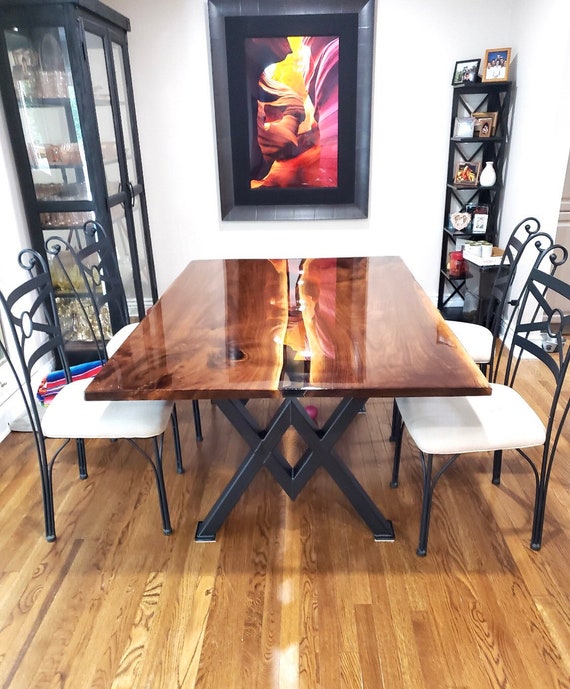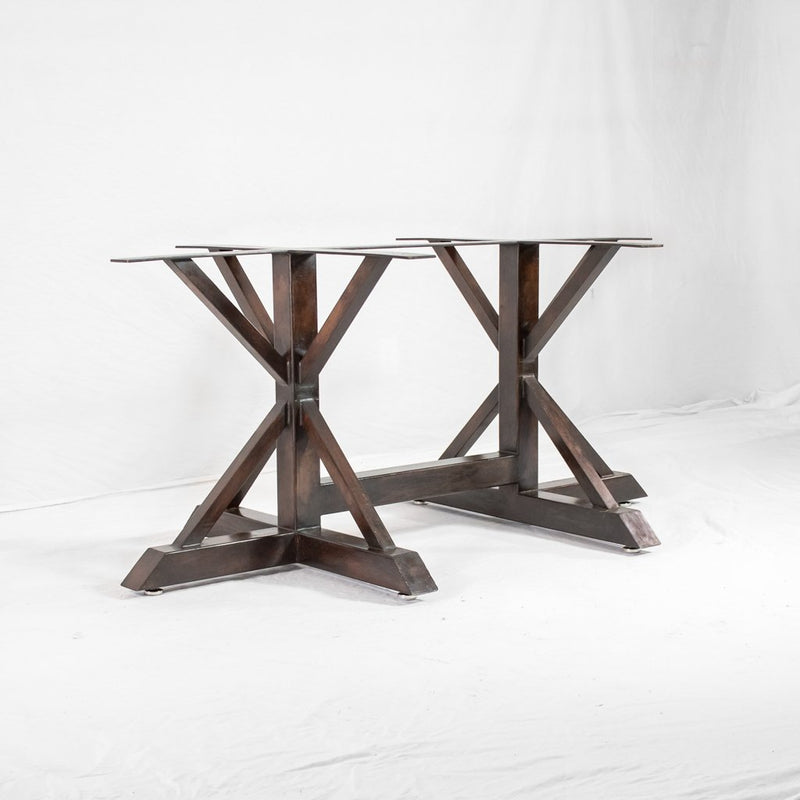How Dining Room Table Legs Can Change the Entire Aesthetic of Your Room
How Dining Room Table Legs Can Change the Entire Aesthetic of Your Room
Blog Article
From Typical to Modern: Find the Ideal Eating Space Table Legs for Your Design
The choice of dining-room table legs plays an essential role in specifying the total character of your space, linking the gap in between standard workmanship and modern-day visual appeals. While classic layouts such as cabriole and turned legs stimulate a feeling of timeless class, contemporary styles like barrette and geometric alternatives offer a chance for striking aesthetic interest. Evaluating the appropriate balance between these designs calls for a nuanced understanding of your existing decoration and individual preference. As you think about these elements, the concern continues to be: exactly how can you flawlessly integrate these varied leg styles to create an unified eating experience?
Recognizing Table Leg Styles
The selection of dining room table leg styles can substantially influence both the aesthetic appeals and performance of the room. Each leg design adds distinct useful functions and visual aspects, catering to varied layout preferences and usage needs. Understanding these designs is vital for picking the appropriate table that aligns with your total interior style vision.
For instance, conical legs supply a clean, classic appearance that can improve an area's beauty, while stand bases supply security and optimize legroom, making them perfect for smaller sized rooms. Hairpin legs, a characteristic of mid-century contemporary style, present a commercial style, enabling a ventilated, open feel. In a similar way, trestle legs evoke rustic appeal, providing durable assistance and a feeling of eternity.
Wood legs can bring warmth and texture, whereas steel choices often share a sleek, contemporary ambiance. Eventually, recognizing table leg designs is vital for developing a cohesive eating location that reflects personal design while making certain functionality and comfort.
Typical Table Leg Options
When selecting eating space table legs, conventional choices usually embody ageless elegance and workmanship. These styles reflect a rich heritage and a dedication to high quality, making them suitable for those that appreciate classic appearances.
Among one of the most renowned typical leg styles is the cabriole leg, defined by its stylish curved form. This design frequently features decorative carvings and is most typically discovered in Queen Anne and Chippendale furniture. One more popular choice is the turned leg, which boasts a collection of smooth, rounded forms that provide a classic look while preserving stability.
Additionally, the straight leg, while straightforward, supplies a unadorned and durable framework that can blend seamlessly with a range of tabletop styles. For those attracted to ornate outlining, claw-and-ball feet legs evoke a feeling of majesty and can function as a spectacular centerpiece in any type of eating room.
Finally, pedestal bases, although not strictly legs, supply an alternative standard option that permits adequate legroom and can be beautifully sculpted. Each of these traditional leg designs adds to the total ambiance of an eating space, weding feature with aesthetic allure.

Modern Table Leg Designs
Modern table leg designs provide a diverse series of styles that highlight cutting-edge products and tidy lines. These designs typically prioritize capability while working as striking focal points within an eating room. Minimalist aesthetics prevail, with legs crafted from materials such as steel, glass, and engineered wood, which add to a airy and modern feel.
One prominent layout is the barrette leg, identified by its slender, tapered framework that supplies stability without overwhelming the tabletop (dining room table legs). This design is typically located in mid-century contemporary furnishings and can easily match various table forms. One more trend is making use of geometric forms, where legs may handle angular or unbalanced forms, including visual rate of interest and a touch of artistry

Blending Designs for Distinct Areas
Commonly, property owners look for to develop distinct dining rooms that reflect their individual design by blending numerous style elements. This method enables the consolidation of varied visual appeals, leading to an unified yet distinct atmosphere. For example, coupling a rustic wood table with streamlined, contemporary steel legs can produce a captivating comparison that raises the space's overall allure.
Furthermore, integrating vintage table legs with contemporary tabletops can evoke a feeling of history while preserving a modern-day sensibility. Such combinations not just display specific preference but also urge imagination, enabling home owners to curate a space that feels both personal and welcoming.
Shade plays a crucial function in this blending procedure; picking table legs that complement or contrast with the existing shade plan can enhance visual passion. Whitewashed legs can soften the daring of a dark table surface area, creating a balanced visual.
Tips for Choosing the Right Legs
Choosing the right table legs is necessary for accomplishing both capability and aesthetic charm in your dining space. Begin by taking into consideration the overall design of your room. Traditional setups take advantage of legs that include complex carvings or turned designs, while contemporary spaces may ask for sleek, minimal styles.
Following, assess the height and security of the legs. dining room table legs. Conventional table vary between 28 to 30 inches in height, so make certain the legs enhance this measurement for convenience. Additionally, robust materials, such as hardwood or steel, can enhance security and longevity
Evaluate the leg form also-- alternatives include right, tapered, or pedestal designs. Straight legs supply a classic look, while conical legs can add a touch of style. Pedestal bases supply sufficient legroom and are excellent for smaller sized spaces.
Verdict
In recap, selecting the perfect dining area table legs requires mindful factor to consider of both typical and modern designs. Conventional alternatives such as cabriole and turned legs offer classic sophistication, while modern-day layouts like hairpin and geometric forms offer a modern touch. By balancing leg style, height, and product with the general decoration, a natural and inviting environment can be attained. Eventually, the chosen table site web legs need to show the wanted visual, improving the dining experience within the area.
The range of eating space table leg styles can dramatically affect both the aesthetic appeals and capability of the room. Eventually, comprehending table leg styles is crucial for producing a cohesive eating location that mirrors personal style while making sure functionality and comfort.One of the most iconic standard leg styles is the cabriole leg, characterized by its elegant bent shape. Straight top article legs use a timeless look, while tapered legs can include a touch of sophistication.In recap, selecting the ideal dining room table legs calls for careful consideration of both traditional and modern designs.
Report this page